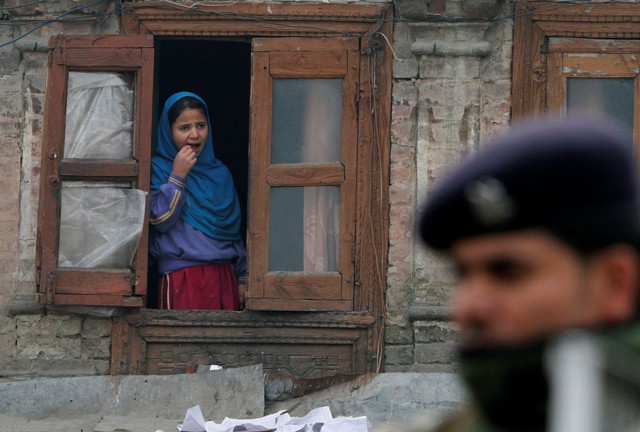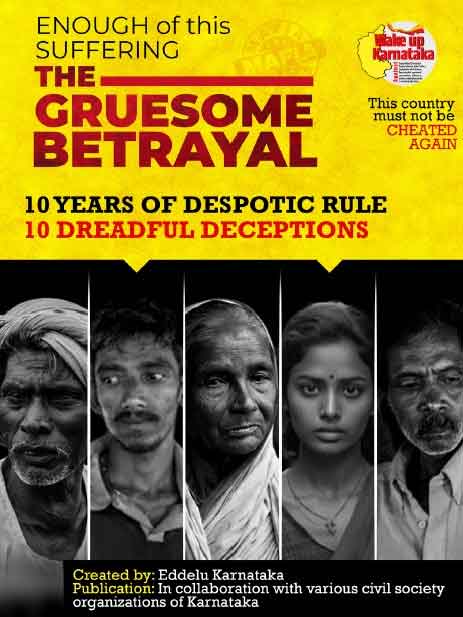
Historically, Kashmiris since 1819 have always greeted the voices raised from outside the state against their oppression and in support of their cause. In 1934, when Mahatma Gandhi in response to a missive by a Kashmiri Pandit leader, Prem Nath Bazaz wrote to him in a letter dated May 15, 1934, “Seeing that Kashmiris predominantly Mussalman it is bound to become one daya Mussalman state. A Hindu prince can therefore only rule by not ruling,i.e., by allowing the Mussalmans to do as they like by abdicating when they are manifestly going wrong. ”The Maharajas of Kashmir ironically had declared the overwhelmingly Muslim majority state as the Hindu state- and for all practical purposes treated the Muslims of the state worse than quadrupeds and denied them all fundamental rights. In the assertion made by Mahatma Gandhi, an influential section of Muslim leaders of the state had found a voice for Kashmir. Prem Nath Bazazin his letter dated May 8, 1934, toGandhi, had castigated the emerging KashmirMuslim leaders in bad language and blamed them for “exciting the religious fanaticism of the illiterate masses.” Pointing an accusing finger towards Sir Mohammad Iqbal, the poet of East the Kashmir Pandit leader Bazaz had blamed him for ‘dreaming of wiping out Hindus from Kashmir and establishing a Mohammedan confederacy in Northern India.’ Gandhi in refusingto be tricked by Bazaz biased diatribe had endeared himself to a section of Muslim leadership in the state- who for many more years looked towards him forinspiration.
On November 25, 1947, when first Prime Minister of India, Nehru informed the Indian Parliament that people of Jammu and Kashmir wouldbe given a chance to decide their future under the supervision of the United Nations, again an important section of Kashmir leadership saw an important voice in him for articulating fundamental right of people of the state.
In January 1948, the Government of India took the Kashmir problem to the United Nations. The United Nations in one after another resolution affirmed, reaffirmed and guaranteed the right to self-determination to the people of the state.Moreoverprovided a mechanism on the principle of democracy to them for exercising this right. It made peopleto see the august body as the most important voice for their cause. Theseresolutions graduated to the level of international agreements after the two countries became signatories to them.
Subsequently, people saw all those countries and individuals who supported the right to self-determination for people of the un-divided Kashmir as their voice. Despite, the number of votaries for the right to self-determination in the Indian elite diminishing there are someimportant individual voices in New Delhi and other cities even on the datethat have been eloquently articulating the cause of right to self-determination for people of the state.For youth bidding farewell to arms, the 2008 and 2010 uprisings wereseenasa paradigm shift from armed resistance to peaceful protests. These “Intifadas” had seen some Indian intellectuals once again supporting the right to self-determination for the people of the state. Some eminent people like Arundhati Roy and Swaminathan S Anklesaria Aiyar without mincing words had stated, “We promised Kashmiris a plebiscite six decades ago. Let us hold one now, and give them three choices: independence, union with Pakistan, and union with India…Let Kashmiris decide the outcome, not the politicians and armies of India and Pakistan.” (TOI 17 August 2008). Sadly, these saner voices insteadof receiving due weightage were drownedunder the cacophony of the “ultra-nationalism.”
Irrespective, of geography and nationality people of the state have been looking at all those organizations and individuals who recognize their fundamentalright or articulate their pain and agony as their voice. On 14 June 2018, the people of the state during past seventy years for the first time found a major voice at the international level in the Office of the United Nations High Commissioner for Human Rights. It published 25958 words report spreading over 49 pages on the situation of human rights situation in Jammu and Kashmir. The report titled, ‘Rights in Kashmir: Developments in the Indian State of Jammu and Kashmir from June 2016 to April 2018, and General Human Rights Concerns in Azad Jammu and Kashmir and Gilgit-Baltistan’ is supported by 388 references, with large number of these from Indian Parliament and many other independent sources such United Nations Military Observers Group stationed in India and Pakistan. Some quite exhaustive reference not only mention about the sources of the information about the human rights situation in the state but also bringinto sharp focus the non-resolution of the Kashmir Dispute- the rootcause of the grave rights violations in the state. The reportlargely is based on secondary sources. Nonetheless, irrefutable and fully documented.
In 2016, Kashmir once again shot into international headlines for the grave human rights violations. The blinding of scores of children and impairing vision of hundreds of others with men in uniform firing pellets directly into their eyes sent shockwaves across the world. Scores of newspapers in their editorials condemned these inhuman acts,and dozens of opinion writers expressed their shocks over converting Kashmir into a land of ‘dead-eyes.’ In this grim scenario, the UN High Commissioner for Human Rights immediately after the outbreak of protests and barrage of human rights violations in 2016 engaged with India and Pakistan for seeking access for a team to visit the state on both the sides of the LOC to establish facts correctly. New Delhi turned down the request,and Islamabad also made it conditional and tagged it with India granting permission to it. Every subsequent request made by the Commissionwas also turned down resulting in compiling the report “remotely.
Lots of international human rights organizations including the Amnesty International, Freedom House,and many others have compiled and published human rights reports in Kashmir in the past. The UNHRC report is different in as much as itmakes seventeen recommendation to India and seven recommendation to Pakistan for improving human rights situation in the divided state. In fact, all these recommendations are nothing but voxpopuli. The people of Jammu and Kashmir have been raising these demand in all available forums and demanding them from the rooftops for twenty eight years.
The report is also different in as much as it does not only dwell upon the human rights violations but also on the genesis of the dispute.That is the basic cause behind the human rights violation and calls upon India and Pakistan to ‘fully respect the right of self-determination of the people of Kashmir as protected under international law. In fact, after marathon sessions and protracted arguments by India and Pakistan on the floor of the United Nations Security Council, the right was guaranteed to the people of Jammu and Kashmir by the comity of nations. Neverthless, the United Nations has so far failed to see this right of people of the state respected.
To ensure peace in South-Asia and to improve human rights situation, the United Nations Human Rights Council should ‘consider the findings of the report and agree tothe establishment of a commission of inquiry’ to conduct a comprehensive independent international investigation into allegations of human rights violations in Kashmir.’
The report should awaken the world community about the ground realities in Jammu and Kashmir and work for ensuring respecting the right of self-determination of the people of the state.
Z. G .MUHAMMAD
Columnist and Writer
Srinagar,
Kashmir.
www.peacewatchkashmir.com








































